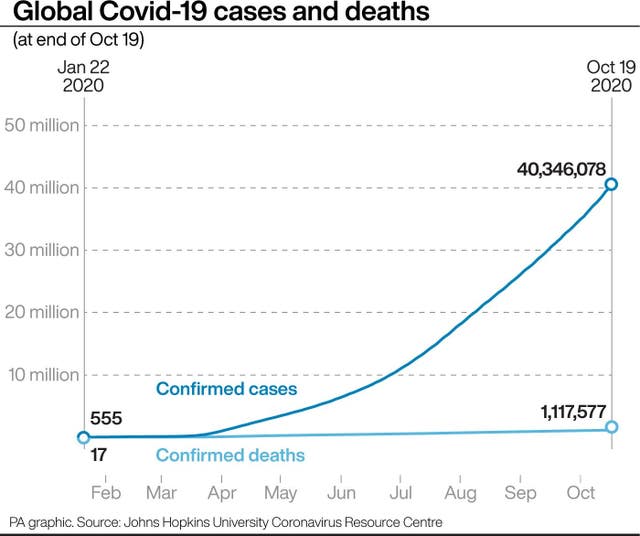Argentina health officials say the nation has officially surpassed 1 million coronavirus cases, becoming the fifth country to do so.
Across Latin America, three other nations are expected to reach the 1 million case milestone in the coming weeks — Colombia, Mexico and Peru.
The grim mark comes as Latin America continues to register some of the world’s highest daily case counts.
And though some nations have seen important declines, overall there has been little relief, with cases dropping in one municipality only to escalate in another.
The trajectory is showing that the pandemic is likely to leave no corner of Latin America unscathed.
“The second wave is arriving without ever having finished the first,” said Dr Luis Jorge Hernandez, a public health professor at the University of the Andes in Colombia.
Argentina has seen cases spiral despite instituting one of the world’s longest lockdowns.
Colombia’s major cities have seen a dip, but smaller areas like the department of Caldas in the coffee region are only now reaching a peak.
Peru’s overall numbers have dropped, but officials recently reported 12 regions are spiking back up. Mexico, likewise, has seen a rise in a quarter of all states over the last week.
The result is that rather than a second virus wave like that being seen in Europe, epidemiologists anticipate a more sustained, plateau-like trend.
“Our countries are still getting out of the first wave,” said Dr Marcos Espinal, director of the Pan American Health Organisation’s Department of Communicable Diseases.
“A great part of the population remains exposed and community transmission continues.”

The virus’ cruel path through Latin America is a consequence of weak public health systems, social factors like poverty and poor government decisions early on that resulted in flawed or limited testing and little contact tracing.
Today the region is home to half the 10 countries with the highest total cases around the globe.
Argentina initially registered low virus case numbers but now has one of the highest rates of new daily infections per capita, according to Our World in Data, a non-profit online scientific publication based at the University of Oxford.
It is on par with several European countries that are experiencing a resurgence of the virus.
Dr Adolfo Rubinstein, a former Argentine health minister, said the nation depended too heavily on lockdowns as its primary means of controlling the virus, failing to purchase enough tests in the initial months of the pandemic.
Where the virus is appearing is also shifting. Initially, up to 90% of the confirmed cases were in metropolitan Buenos Aires. Today, 65% of Argentina’s cases are in its provinces, authorities said.
The high percentage of tests coming back positive in Argentina suggests the country is still likely missing vast numbers of infections.





Comments: Our rules
We want our comments to be a lively and valuable part of our community - a place where readers can debate and engage with the most important local issues. The ability to comment on our stories is a privilege, not a right, however, and that privilege may be withdrawn if it is abused or misused.
Please report any comments that break our rules.
Read the rules here